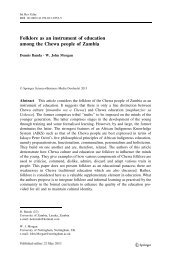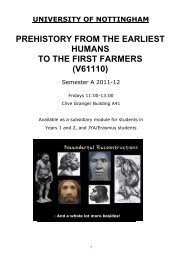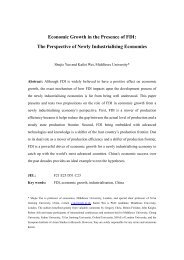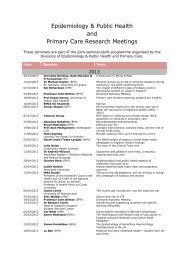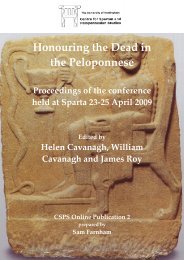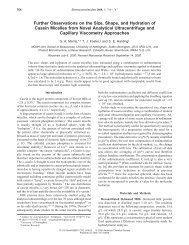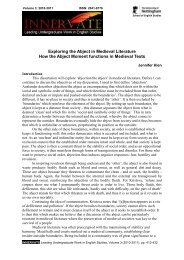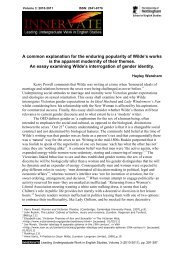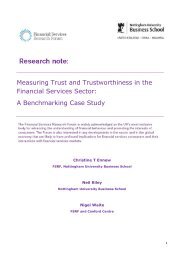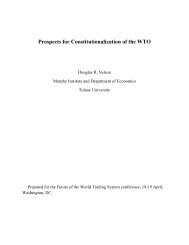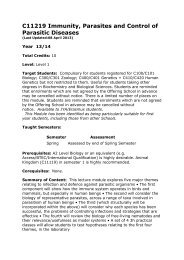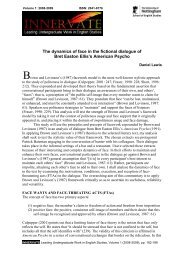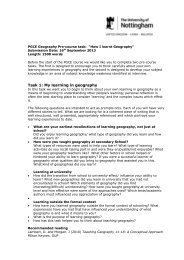Break date estimation for models with deterministic structural change
Break date estimation for models with deterministic structural change
Break date estimation for models with deterministic structural change
You also want an ePaper? Increase the reach of your titles
YUMPU automatically turns print PDFs into web optimized ePapers that Google loves.
1 Introduction<br />
The recent literature is replete <strong>with</strong> analysis focusing on <strong>structural</strong> <strong>change</strong> in the trend<br />
function of a time series, motivated by the apparent prevalence of breaks in level and/or<br />
trend in macroeconomic time series; see, <strong>for</strong> example, Stock and Watson (1996, 1999,<br />
2005) and Perron and Zhu (2005). Correct specication of a break in the <strong>deterministic</strong><br />
trend path of a series is vital <strong>for</strong> modelling, <strong>estimation</strong> and <strong>for</strong>ecasting eorts, and is<br />
crucial <strong>for</strong> achieving reliable unit root test inference (see, inter alia, Perron (1989)).<br />
Given that in most macroeconomic series, uncertainty also exists as to whether the<br />
underlying stochastic component is best modelled by a stationary (I(0)) or unit root<br />
(I(1)) process, much recent work (e.g. Harvey et al. (2009, 2010), Perron and Yabu<br />
(2009), Saygnsoy and Vogelsang (2011) and Vogelsang (1998)) has been directed at<br />
testing <strong>for</strong> the presence of <strong>structural</strong> break(s) when the true order of integration of the<br />
series is assumed unknown.<br />
Of equal importance to the presence of a break in level and/or trend in a series is<br />
the related issue of the timing of the <strong>change</strong>, and it is the <strong>estimation</strong> of such breakpoints<br />
that this paper addresses. While a number of methods of break <strong>date</strong> <strong>estimation</strong><br />
have been proposed in the literature, selection of an ecient break fraction estimator<br />
is complicated by the a<strong>for</strong>ementioned fact that the order of integration is typically<br />
not known <strong>with</strong> certainty. In the context of stationary innovations, Bai (1994) and<br />
Bai and Perron (1998), inter alia, consider choosing the break <strong>date</strong> which corresponds<br />
to minimizing the sum of squared residuals, across all candi<strong>date</strong> break points, from<br />
a regression of the level of the series on the appropriate <strong>deterministic</strong> regressors. In<br />
a unit root setting, a more ecient approach is obtained by minimizing the sum of<br />
squared residuals from a rst-dierenced version of the relevant regression; see Harris<br />
et al. (2009). A further alternative, adopted by Carrion-i-Silvestre et al. (2009) in<br />
an assumed local-to-unity setting, is to again <strong>date</strong> the break according to the minimum<br />
residual sum squares, but using a quasi-dierenced regression. Practitioners are<br />
then faced <strong>with</strong> choosing between a number of candi<strong>date</strong> break fraction estimators,<br />
inevitably <strong>with</strong>out knowledge of the underlying integration properties of the series.<br />
In this paper we focus on developing a minimum sum of squared residuals-based<br />
break fraction estimator that per<strong>for</strong>ms well across unit root and stationary processes,<br />
and in the stationary case, across a range of serial correlation structures. In common<br />
<strong>with</strong> recent literature on this topic, e.g. Perron and Zhu (2005) and Yang (2012), we<br />
view our analysis as complementary to methods of break detection, <strong>for</strong> two reasons.<br />
First, many testing procedures explicitly require an estimated break <strong>date</strong>, and the<br />
power of such break detection tests is inherently limited by the accuracy of the dating<br />
procedure. An accurate dating procedure is what this paper provides, hence our proposed<br />
estimator could feed into a number of break detection methods. Second, even<br />
<strong>for</strong> break detection procedures that do not require an a priori break <strong>date</strong> estimator<br />
(e.g. the exp-Wald statistic proposed by Perron and Yabu, 2009), interest still lies in<br />
the timing of the break should one be detected, there<strong>for</strong>e our proposed procedure is<br />
equally relevant there. The relevance also extends to unit root testing in the presence<br />
2



